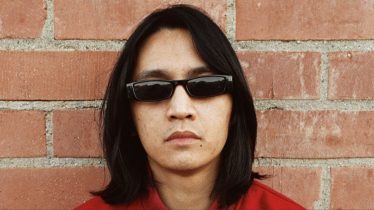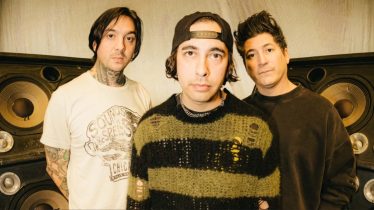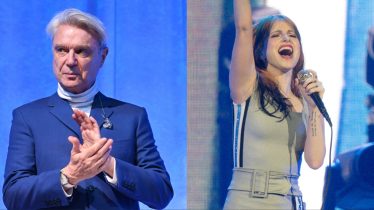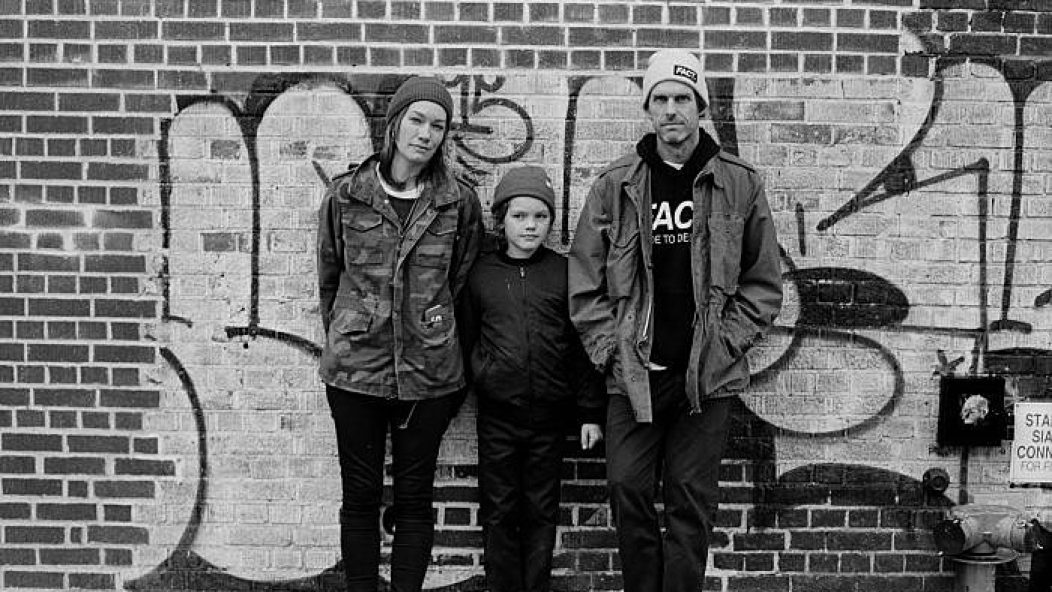
How the '80s punk-rock scene inspired Damon Way's ever-evolving career
The phrase “multihyphenate” was created entirely because of individuals like Damon Way. It would be nearly impossible to limit this hypercreative to one specific category. In many ways, one could argue that the term “renaissance man” wouldn’t even begin to describe the artistic reach and contribution he has brought to counterculture over the last 25-plus years. Way’s origin story is not unlike others who found themselves working and creating within the subcultures we all have come to love, but it’s his artistic roots and penchant for crafting forward-thinking art and moving across multiple artistic spaces that have cemented him as one of the most influential people in both alt and pop culture.
Way grew up in the height of the intersection between punk rock and skateboarding that was just hitting its apex in the 1980s, and he would use this as a jumping-off point in his pursuit of a life constantly evolving and dedicated to artistic innovation. Many would be simply impressed enough to learn that he was one of the founders of DC Shoes, a company that set the stage and laid the groundwork for some of the most influential and iconic concepts to permeate the footwear industry, action sports and eventually mainstream culture as a whole.
Read more: How the White Stripes and the Hives built on the legacy of garage rock
However, it didn’t just stop there. Way went on to become not only a jack of all trades but a master of all in his own right. There were no limits in place, and this led Way to creating what could be argued as his most personal clothing venture, FACT, to being a touring musician for a critically acclaimed band, photographing iconic subjects and eventually shaking up tech with his foray into designing groundbreaking computer accessories. He also dove into what was, at the time, uncharted territory with his company Syng—spearheading a path toward rethinking how we consume music and audio as a whole. In this interview, we discuss everything that led Way to the point where he is now. For Way, it’s safe to assume that nothing is off limits as long as it is done with purpose and passion.
What is the last song/artist you listened to?
The last artist I listened to was Mika Vainio. He was behind the experimental electronic trio Pan Sonic. Prior to his death in 2017, he was making these really precise, deconstructed ambient noise albums under his own name. The music will pull you into another world.
What was the first show you ever went to?
The first show I ever went to was in the seventh grade back in 1984, which was Oingo Boingo. One of the more memorable shows from back in the ’80s was seeing Jane’s Addiction on the Nothing’s Shocking tour. It had tremendous influence on me from a creativity and self-expression POV. The energy that Perry Farrell led with was deeply intoxicating.
What was the timeline like for your entry into music, and how did it lead you to action sports and eventually becoming an innovative businessman who has brought so many creative ideas, across multiple platforms, into the world?
It started in middle school. [I had] this inherent attraction to the subversive energy, and creativity, being projected from punk rock and skateboarding. It had real gravity, which drew me in quickly. I just wanted to consume as much as I could and go deeper into it all. This was the spark that placed music as my primary lens on culture and creativity.
During this time, I had a couple of really close friends that were drawn to the same things, which created a space to explore music and skateboarding together. Two of those friends were Matt Hensley and Mario Rubalcaba, both of which were pro skateboarders with deep histories in bands.
Was there a band from this era that specifically had a huge impact on you?
Red Hot Chili Peppers had a lot of influence on me during my teen years. I bought their first self-titled album when I was 14, back in the mid-’80s, and remember sitting with the liner notes for long periods of time studying the band. I would absorb any materials I could get my hands on to understand the gravity behind it all. The band’s energy was so raw, with a creative fearlessness far above anything else. Every now and then, I will go back to that first record and watch the video for “True Men Don’t Kill Coyotes.” During that time, I saw them as the perfect blend of music and skateboarding, but with a radically unique approach.
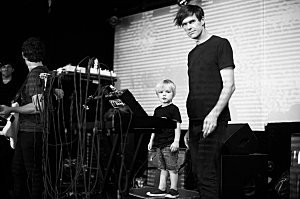
I feel like that brings us full circle in that a lot of what you do is an homage to music and this culture. With DC Shoes, it was a mix between the skateboard world, with everyone from Rob Dyrdek and Chad Muska, to MTV and the music scene at large.
The best way to characterize DC Shoes was the dynamic range between Ken Block and I, which was more or less a proxy for mass-market initiatives like MTV and Rob Dyrdek to working within the creative subcultures of art, music and fashion on things like the DC Artist Projects.
You are so low-key, and in many ways not self-promotional, but I feel like everything you do is super curated, with such an artist element in place always, especially with your photos. In other words, everything you do feels like it is done with purpose. Where does that come from?
There are a few things there. I like shooting photos because I like interesting people and the way they look captured on black-and-white film. It’s almost always been a scrapbook for me to remember moments in time and the people that I have connected with. I never put a lot of emphasis on telling that story, as it has always been something that I like to do on the side, similar to my enthusiasm for vintage synthesizers and drum machines.
As one of the founders of DC Shoes, I feel like you were very ahead of your time. You were doing artist collaborations before anyone else in the footwear industry, not being tied strictly to athletes. Where did that innovation come from?
When Shepard Fairey [contemporary artist/founder of OBEY] was living in San Diego, we would hang out, and one night we were talking about the work we were doing, and it occurred to me that it would be really cool if we found an intersection for these mediums. From there, we developed the first-ever artist collaboration in the footwear space, dubbed DC Artist Projects, which we launched with Shepard in 2001. This was then followed up with new projects by KAWS, Phil Frost, Thomas Campbell, Aaron Rose, etc. Those days were really special because of their tribal nature and being before the corporate takeover and mass commercialization of the space. Within this community, everyone seemed to be creatively unique with something to offer. This compelled many of us to work together to cross-pollinate ideas and mediums through a process of collaboration and output.
Obviously, your current apparel brand FACT is dedicated to the intersection of music and skateboarding culture, but who or what was your biggest inspiration aesthetically, as the brand has such a unique art direction?
Hands down, it was Peter Saville and the work he did across Factory Records, New Order and Joy Division. This was my single point of inspiration for FACT when I developed it, even down to the name, which was pulled from the album art on New Order’s first LP, Movement. FACT is like an onion. There is so much music nuance designed into it, with many references to the music subcultures of the 1980s and ’90s. Once you start looking for it within the brand’s graphics, it starts to reveal a story, which generally folds back to my own experience, and proximity, within these communities, their bands and the genres that define them.
The other pieces of the identity also have meaning. The subtext “Made to Destroy” is referencing the accelerated entropy that occurs to all things in skateboarding. Everything built for it will be destroyed fast. The FACT icon/symbol, which was inspired by the Crass logo, also reflects this message. The rectangle represents the material realm, and the lightning bolt represents its destruction. It packages up nicely into a deeply nuanced brand story and identity.
Tell me about your stint playing/touring with the post-punk/darkwave act the Soft Moon and how this opportunity came to be.
That was an amazing experience. Since the 1990s, I have loved playing with synthesizers and drum machines. And while living in SF around 2010, and throwing underground post-punk/minimal synth/darkwave parties, I was introduced to Luis Vasquez, who created the Soft Moon. He had just finished his first album, which was being released through Captured Tracks, and needed to figure out how to bridge it into a live show. We ended up translating everything from Ableton over to outboard synths sequencers [and] drum machines for live performance. I played in the band for almost two years but had to leave it at the end of 2012 because of family.
During this time, we had a number of tours across the U.S. and EU and played with some amazing bands. It was a beautiful moment in time where much of the underground synth and post-punk bands of the early 1980s were being discovered and repressed. This galvanized a strong global scene centered around this music, for which we were in the middle of during those years.

This brings us to the point in your career working on Apple accessories with the company Incase Designs and now your foray into spatial audio technologies/speakers with the company Syng. What drove you to dive into these newer avenues/markets?
It’s about white space. I would ask myself, “What are the things I have learned along the way that could be applied to nascent market segments or product categories?”
When I got started on Incase, I was looking at computer accessories and saw that everything was utility-focused, made in black plastic without any sense of brand or emotional layering behind it. So we approach it like we would a skateboard or streetwear brand and positioned it within the worlds of art, fashion and music. This allowed us to flip the market and recast it with cultural relevance for that period of time.
With Syng, it feels very similar in the sense that most audio brands are built on audio-tech vs. culture and community or the emotional streams that move us.
Tell me more about Syng. Where did it start, and why should people learn more about it and experience it for themselves?
Syng started as an idea three years ago with my friend Chris Stringer, who had recently retired from Apple after working under Jony Ive for 20-plus years. After some time off, he wanted to work on a new venture. What came out of that was Syng and a desire to turn home audio upside down by moving beyond conventional channel-based systems, stereo and surround sound into a new spatial standard we have dubbed Triphonic, which unshackles sound and allows for deep spatial listening with an interactive layer. And all of which intersects with the rapid evolution of visual technologies and the new media experiences coming out of it.
We are now working hard to demonstrate the potential of the platform to artists and creators, which is generating a ton of enthusiasm. We really want to see this catch fire and force a paradigm shift with how music is created and experienced.
It seems like no surface is off limits for you. Where does that stem from?
It’s an extension of where we come from and what we do—and the throughline that threads it all. When you look at the arc across DC Shoes, Incase, the Soft Moon, FACT and Syng, it all points back to subcultures that informed and inspired us along the way, first as kids, then as young adults. These subcultures are teachers and very potent when its lessons are applied to the broader world. Everyone wants some level of cool, and this is where it comes from. There is a reason the biggest brands in the world look to skateboarding and music for their piece of it.
